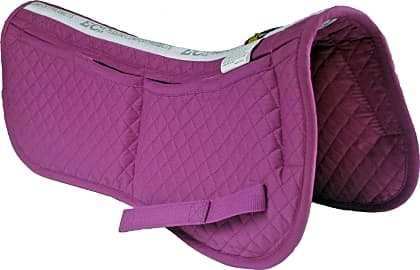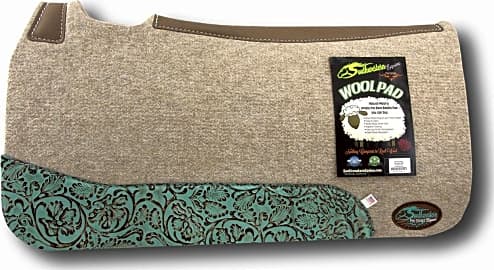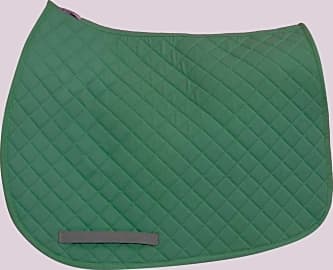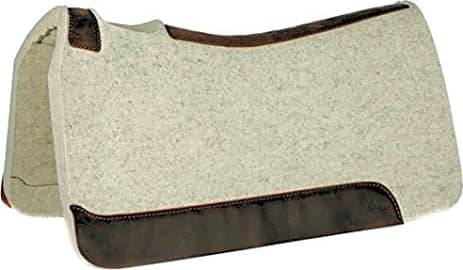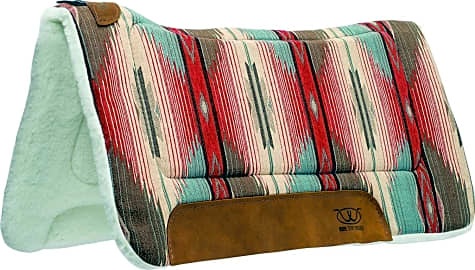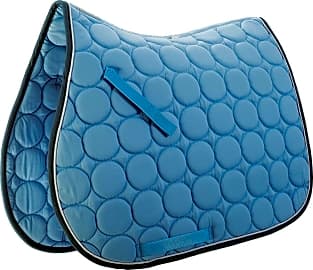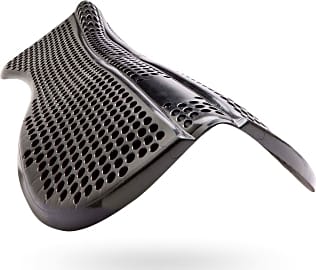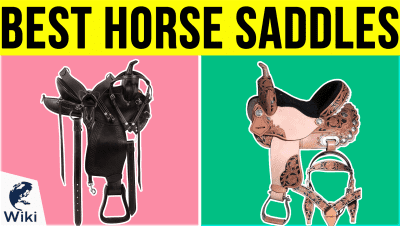The 10 Best Saddle Pads

This wiki has been updated 35 times since it was first published in December of 2016. If you are going to burden your horse with your weight atop it, the least you can do is make it a touch more comfortable when you do so. These saddle pads are designed to eliminate chafing against the skin, alleviate some pressure points, and allow for some cooling airflow. Just be sure to start with a well-fitting saddle, and always choose a model that's meant for your riding style. When users buy our independently chosen editorial picks, we may earn commissions to help fund the Wiki.
Editor's Notes
March 15, 2021:
It was a simple round of updates for us, as the vast majority of our previous picks for the category continued to be great selections. The only real major changes we made were removing the Shires Airflow Anti-Slip, which we noticed wasn’t available at the time of this writing, and replacing it with the Kavallerie Maximum Airflow, which caught our eye with a design that looks to be quite comfortable, including features like breathable bamboo fabric and faux-fur details.
We also bumped the NRS 5 Star Natural down a few spots, as it’s a relatively costly option, but still kept it quite high in our rankings, believing that it remains one of our better-looking choices.
To assist you with further equestrian needs, we also maintain lists of stirrups and saddles that you might be interested in.
July 01, 2019:
It may not be cheap, but the 5 Star Square Roper remains a fine choice, since an investment in this model is an investment in lasting quality. It's handmade in the USA from reliable, high-quality wool felt, and it's offered in plenty of sizes. We also still like the ECP All Purpose since its fit is customizable and can be re-fitted as needed. It's also quite versatile and offered in plenty of colors, so you aren't limited to a Southwestern or natural look. If you don't need the adjustable padding, the TuffRider Basic is still an option to consider, but it does tend to run quite large. On the plus side, however, it's extremely budget-friendly. Finally, we decided to remove the Vast Horse Cover in favor of the higher-quality Derby Originals English. It offers easy care at a fairly low price point, although it isn't the thickest option you'll find.
Special Honors
Professional's Choice Comfort-Fit SMx Air Ride The Professional's Choice Comfort-Fit SMx Air Ride is no ordinary option. Created with a contour that follows the spine, this model has a pliable, energy absorbing core that provides a high degree of comfort, as well as cooling that helps maintain a desirable body temperature. profchoice.com
LeMieux ProSport Dressage Blending style and comfort, the LeMieux ProSport Dressage pairs an attractive suede top with a soft bamboo lining that helps keep sweat under control. It's offered in a wide range of colors that match the company's fly hoods and polo bandages. lemieuxproducts.com
The Evolution Of Saddle Pads
Over the years, with modern medical technology and expertise influencing their design and fabrication, saddle pads evolved in function and form.
When horses were first domesticated, the saddle blanket was the only equipment placed on a horse's back to protect the rider. As the role of the horse shifted from a work animal to a high-performance athlete, the need for better riding equipment was inevitable. Thus, the development of saddle pads.
Over the years, with modern medical technology and expertise influencing their design and fabrication, saddle pads evolved in function and form. Aside from absorbing sweat and keeping the saddle dry, their function is to reduce the concussive forces acting on the horse’s and rider’s respective spines. They are also used to modify the saddle’s fit on the horse. Modern saddle pads can even provide an element of fashion.
The Different Types Of Saddle Pads
The fundamental function of saddle pads is to provide cushioning under the saddle, distributing and lessening impact between the spines of the horse and the rider. Saddle pads are typically made of a durable and washable fabric blend, such as cotton with polyester fibers that are quilted over a thin layer of poly fill. Saddle pads can offer much more functionality, though, depending on the materials used and some specific design features.
Generally, the most common classifications of saddle pads are Western and English. The difference between these two is that they are built to slip underneath their respective types of saddle.
Western saddles are larger and heavier than English saddles. They are designed to spread the weight of the rider over a larger area of the horses back. Western pads are built like blankets, square-shaped or rectangular, and made from wool or similar material.
Gel pads help distribute weight more evenly along your horse’s back to relieve pressure points.
English saddles are designed to give the rider a closer feel of the back of the horse. While they are lighter and smaller, English saddle pads are generally a bit thicker and more padded than their Western counterparts. They come in different shapes, ranging from oval styles to more fitted. Some pads closely resemble the shape of your horse’s back.
There are several other types of saddle pads, including the dressage, which is essentially rectangular in shape with a long drop at the sides. This length is set to accommodate the long straight flaps of a dressage saddle.
Another type of saddle pad is the jumping saddle pad, which is good for general everyday use and commonly used for that particular discipline. For extra shock absorption when they land, jumpers need a good quality saddle pad. These saddle pads are often made of fiber or foam.
Half saddle pads, inserted over the top of regular saddle pads, are utilized for the purpose of added support and protection. These pads are used to fit more closely to the contours of your horse’s back and to the shape of the saddle. Half saddle pads come in different types of materials. Some of the most common materials used are sheepskin, memory foam, gel, and high density foam. Sheepskin is the thickest material and high density foams are the thinnest.
The gel pad is also one variety of saddle pad. Basically, they are half pads that are placed over a regular saddle pad. They come with front and rear risers for support in a particular area of your horse’s back. You may use it on a horse that has a tender back. These horses may be recovering from an injury or simply need a bit more support. They are intended to help or prevent sore backs. Gel pads help distribute weight more evenly along your horse’s back to relieve pressure points. They are also used to absorb the impact of rider activity.
Another variety is the numnahs. Whereas a saddle pad is usually rectangular, a numnah is more saddle shaped. The edges are visible when the saddle is in place because numnahs are usually slightly larger than the saddle. Also, they are used for two main reasons – to protect your horse’s back and to protect your valuable saddle from dirt and sweat.
How To Choose The Right Saddle Pads
Saddle pads come in a variety of colors and materials that can make it a bit difficult for you to choose the right one for your particular horse. You may choose pads that look aesthetically pleasing on your horses, but saddle pads are much more than just fashion accessories.
To provide comfort and protection for your horse’s back, the saddle pad’s closeness and fit are important components that should be considered.
When a horse is being ridden in a saddle that does not fit well, it will ultimately show a basic set of symptoms including soreness along the spine. To provide comfort and protection for your horse’s back, the saddle pad’s closeness and fit are important components that should be considered. Remember that, aside from providing closeness to your horse, a saddle pad should also offer weight distribution and shock absorbency. It should also absorb excess moisture while retaining airflow.
Custom-designed saddle pads are also available in the market. Most consumers purchase these types of pads to cater to their specific purpose or need. Specially designed pads are used to lessen the effects of sore spots or high withers. These problems occur when the fit of your saddle is not perfect or if you have challenges with your horse’s back. The type of saddle pad you should choose depends on function and on your riding discipline.
It is also very important to know how to get the correct size of a saddle pad to ensure you get the best fit for your horse. To determine the size of the saddle pad, you should match the pad to both the seat size and the type of saddle. To do this, measure the distance from one of the screw heads on the pommel side to the middle of the cantle.
If your saddle fits well, you may only need a simple pad, such as the dressage saddle pad. But if you add too much bulk with saddle padding, it can cause the saddle to become ill-fitting. As a result, pressure points will appear on your horse’s back, so be sure to choose your saddle pad wisely. Always consider its functionality and purpose.


